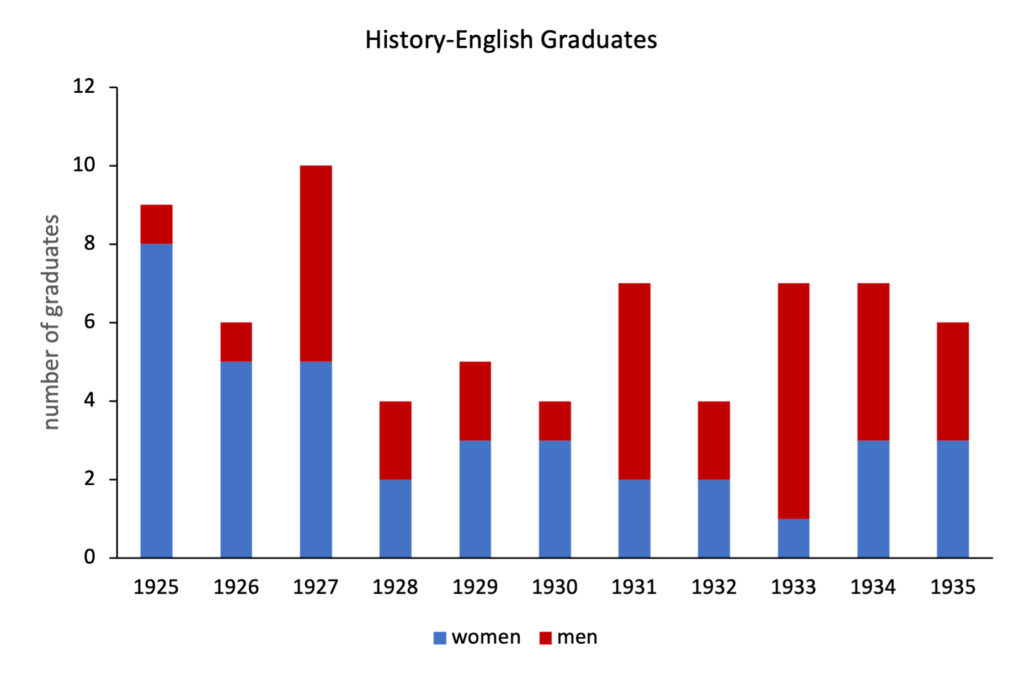The joint History-English degree
St Andrews is now well known for offering a variety of joint honour degree courses, but this has not always been the case. In the early twentieth century, students taking an Honours MA (and not all did) took Honours in a single subject – but were expected to have studied at least one other separate but related subject during their degree course. Honours History could be taken with one subsidiary subject. Joint Honours degrees became available in the 1920s.
In or around 1925, the University began to offer joint Honours degrees: students could take Honours in any two of Philosophy, Moral Philosophy or Mathematics (and Mathematics could also be combined with Natural Philosophy, Chemistry or Applied Mathematics); or they could take Honours in ‘History-English’. In its first few years, this option was particularly popular with women students. In the first year, there were nine graduates in History-English, eight of whom were women. The high female:male ratio continued until 1930, but the degree then became male-dominated. This may be related to wider changes in the student body in St Andrews, and more generally, in the 1930s.

The degree consisted equally of both History and English. In 1935, for example, students’ exams consisted of ten papers in total, five for each subject. History-English candidates, for the History part of their examinations would have been required to take three papers on British Political and Constitutional History covering the years 1066-1603, 1603-1832, and 1832-present day. They would have also been required to take one paper in a prescribed period of which there was an option of three: the Age of Wyclif, the Age of Elizabeth, 1560-1603, and the History of Europe, 1871-1914. Finally, they would have needed to take a paper in a Special Subject, of which there were four: Scottish History, 1542-1640, European History, 1294-1449, Colonial History (History of the British West Indies in the Eighteenth and Nineteenth Centuries), and American History (Diplomatic History of the Civil War). They were also expected to take the same English papers as candidates for Modern Languages, noted as papers 3-6, as well as an option between paper 1 or 2, with the former covering Anglo Saxon language and literature.
By 1935 a joint degree with History was also offered with Economics.
Sources: University Calendars, 1925 and 1935
This blog post was written in 2021 by Georgia Armour, who was then going into her third year in Art History and English at the University of St Andrews.
This post is part of a collection examining the establishment of the History degree at St Andrews, looking at the increasing number of staff and students and the gender balance of those graduating with a degree in history. You can also learn about the establishment of the history degree and its progression in the twentieth century. To learn more about the past paper exams from key decades throughout the twentieth century, follow these links: 1905 Past Paper, 1950s Past Paper, 1970s Past Paper, 1980s/90s Past Paper, and the style and format of past history papers.
